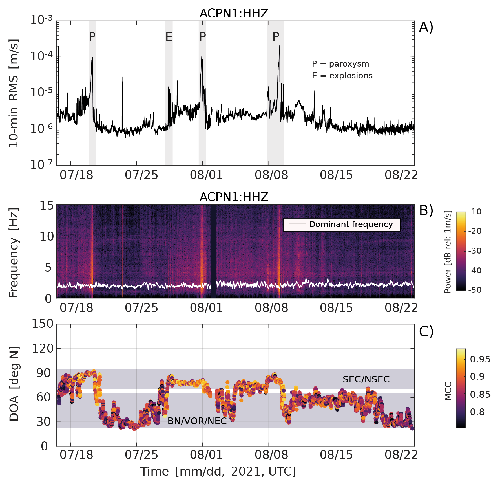Volcanic Tremor Tracks Changes in Multi-Vent Activity at Mt. Etna, Italy: Evidence From Analyses of Seismic Array Data

Zuccarello L., S. De Angelis, V. Minio, G. Saccorotti, C. J. Bean, M. Paratore, J. M. Ibanez (2022).
Geophysical Research Letters, https://doi.org/10.1029/2022GL100056
Abstract
The mild degassing and effusion that characterizes open-vent volcanoes can be interrupted by episodes of sustained explosive activity known as paroxysms. Here, we present observations from a seismic array deployment during the 2021 eruption of Mt. Etna, Italy. During the observation period, degassing dominated surface activity at the central and northeast summit craters; lava flows, Strombolian explosions, and fire fountaining, accompanied by ash plumes, characterized eruption in the southeast sector of Mt. Etna. Seismic array locations showed changes associated with shifts in the style and location of activity across multiple craters at Mt. Etna. We observed changes in array locations between the north-northeast and southeast directions that consistently anticipated the onset of paroxysmal activity in the southeast sector. Our results demonstrate the potential of seismic arrays to resolve vent-specific activity and shed light on precursory patterns leading up to paroxysmal activity.


Devi effettuare l'accesso per postare un commento.